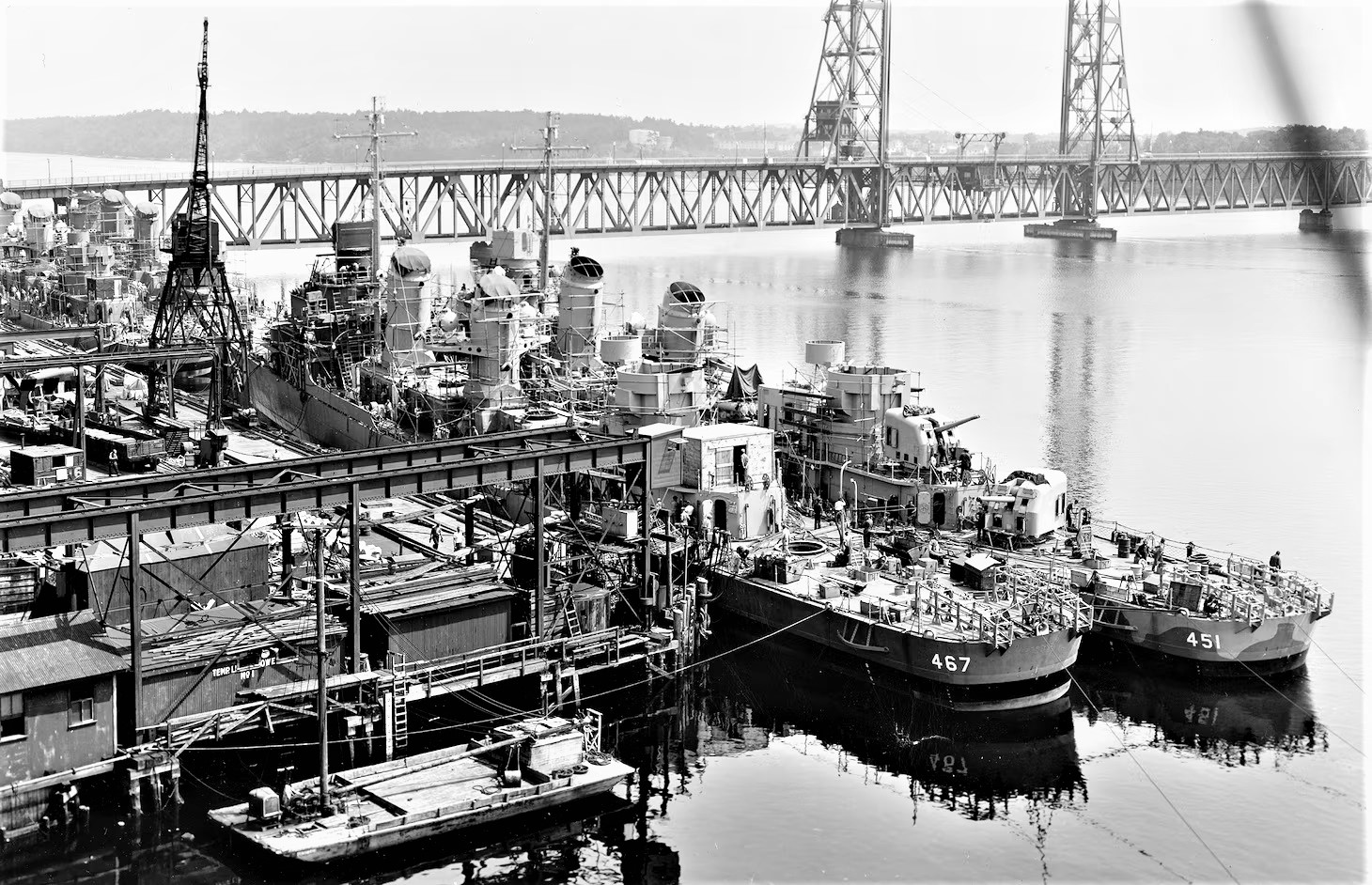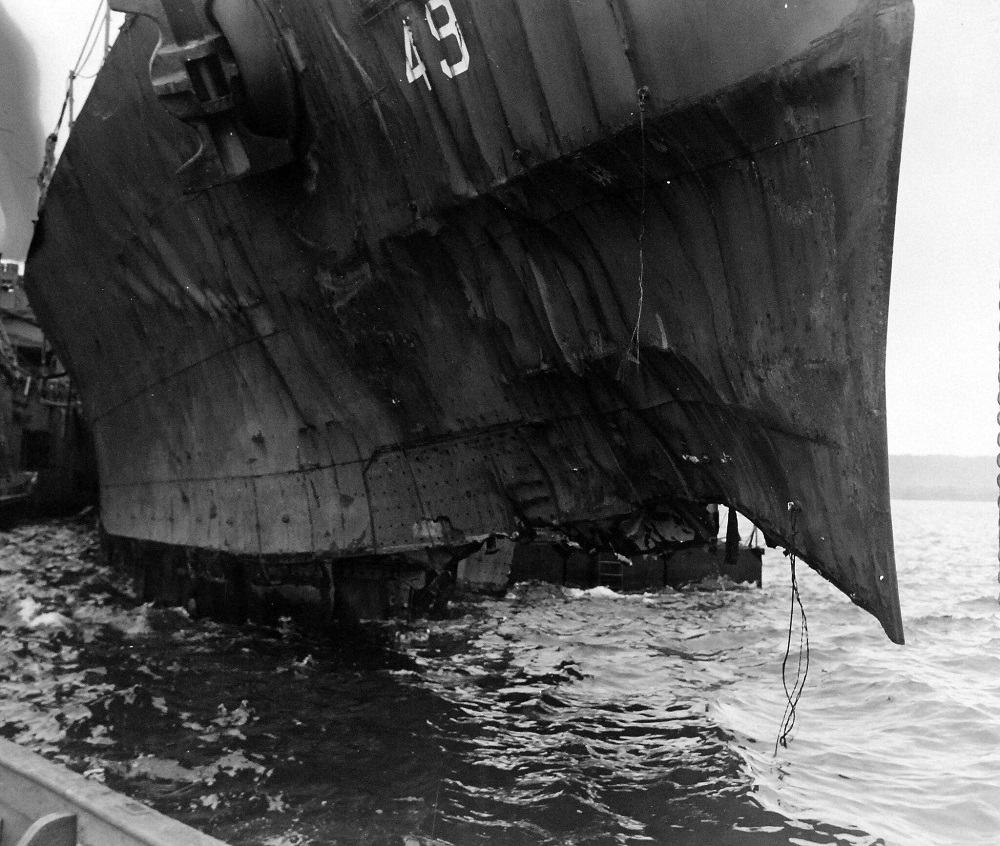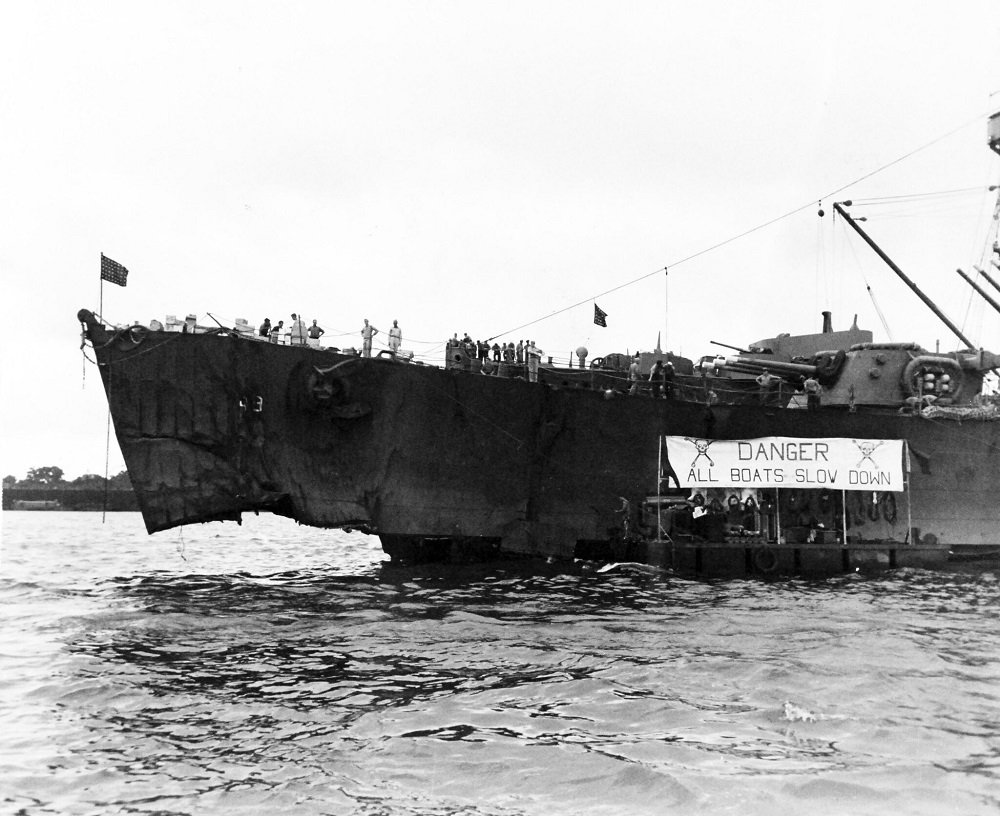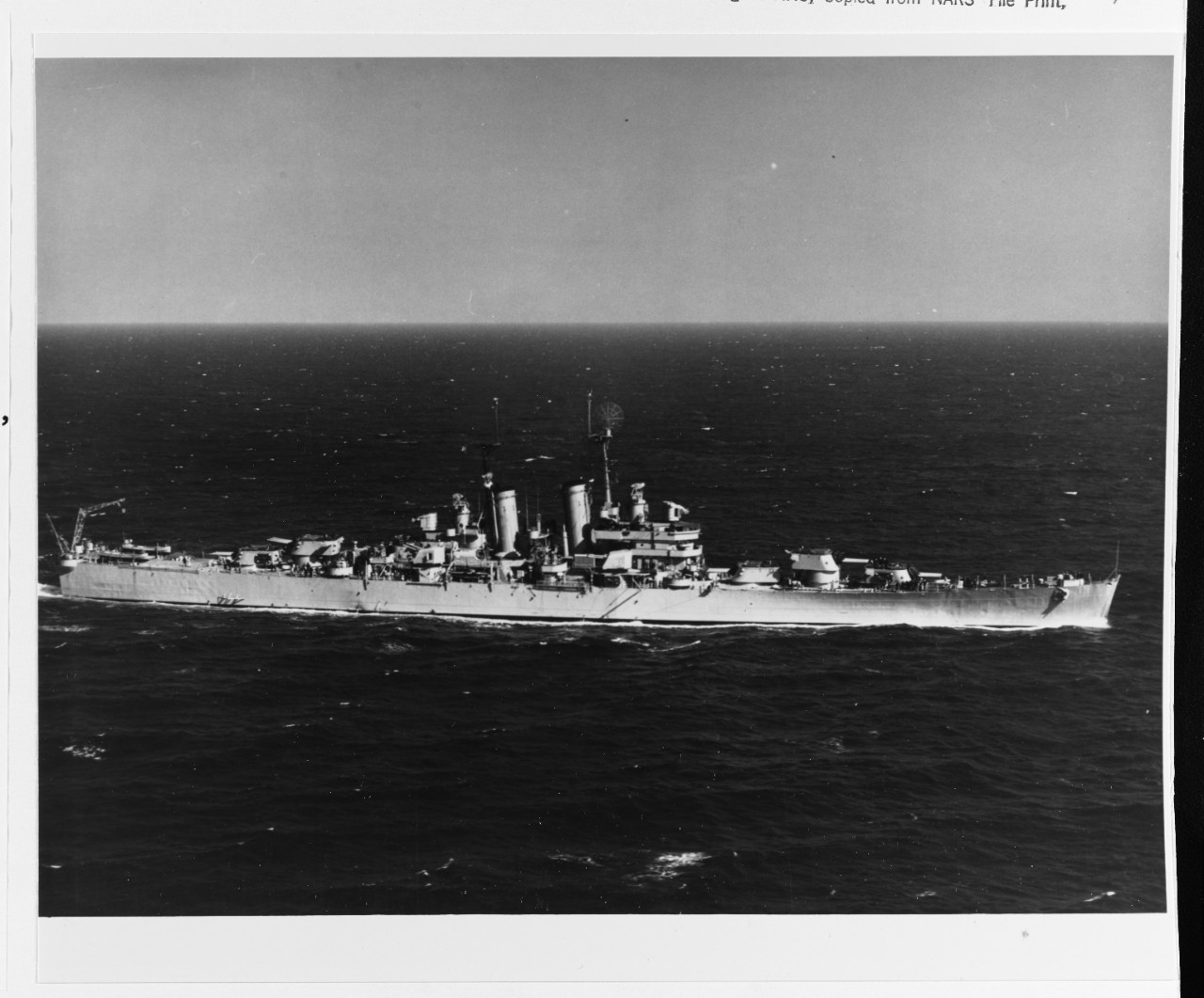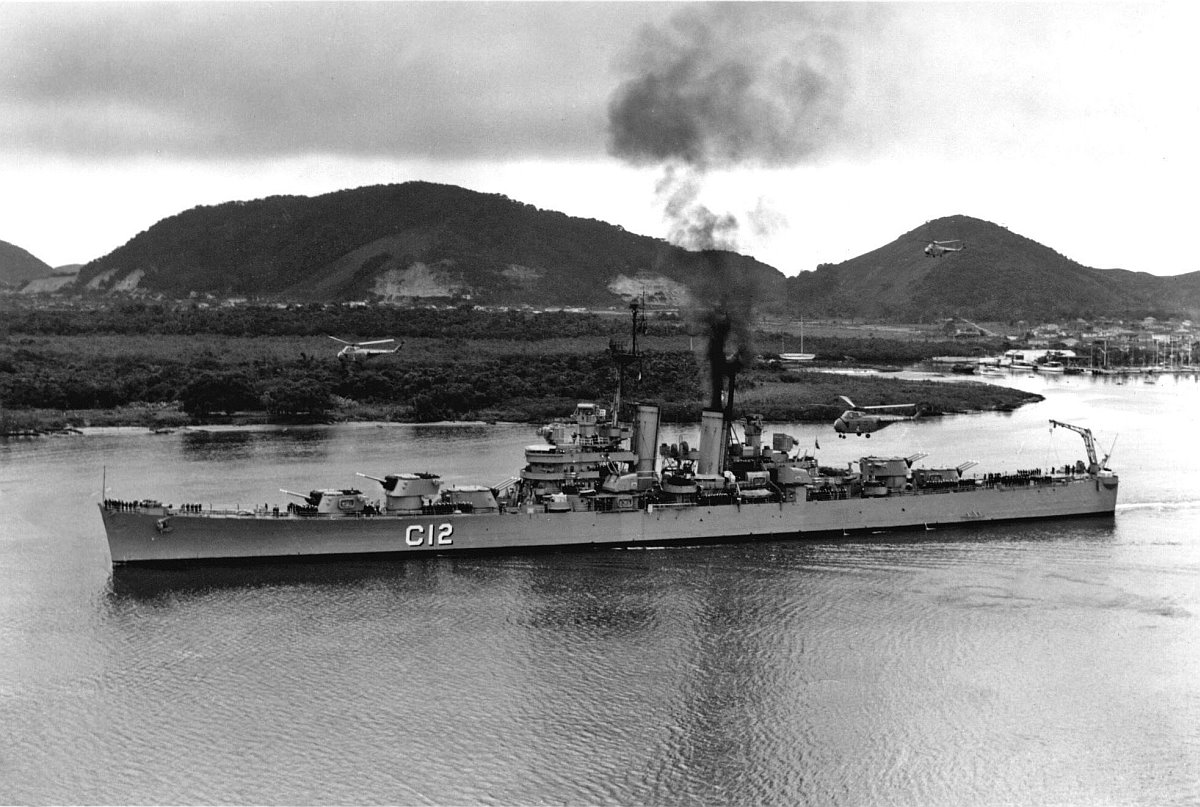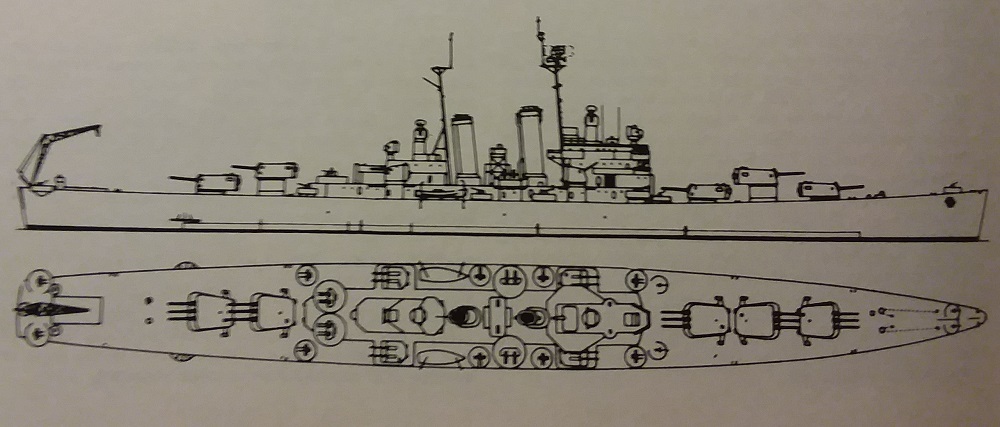Warship Wednesday, June 28, 2023: A 22,000-Yard Fish and a One-Man Army
Here at LSOZI, we take off every for a look at the old steam/diesel navies of the 1833-1954 period and will profile a different ship each week. These ships have a life, a tale all their own, which sometimes takes them to the strangest places.- Christopher Eger
Warship Wednesday, June 28, 2023: A 22,000-Yard Fish and a One-Man Army
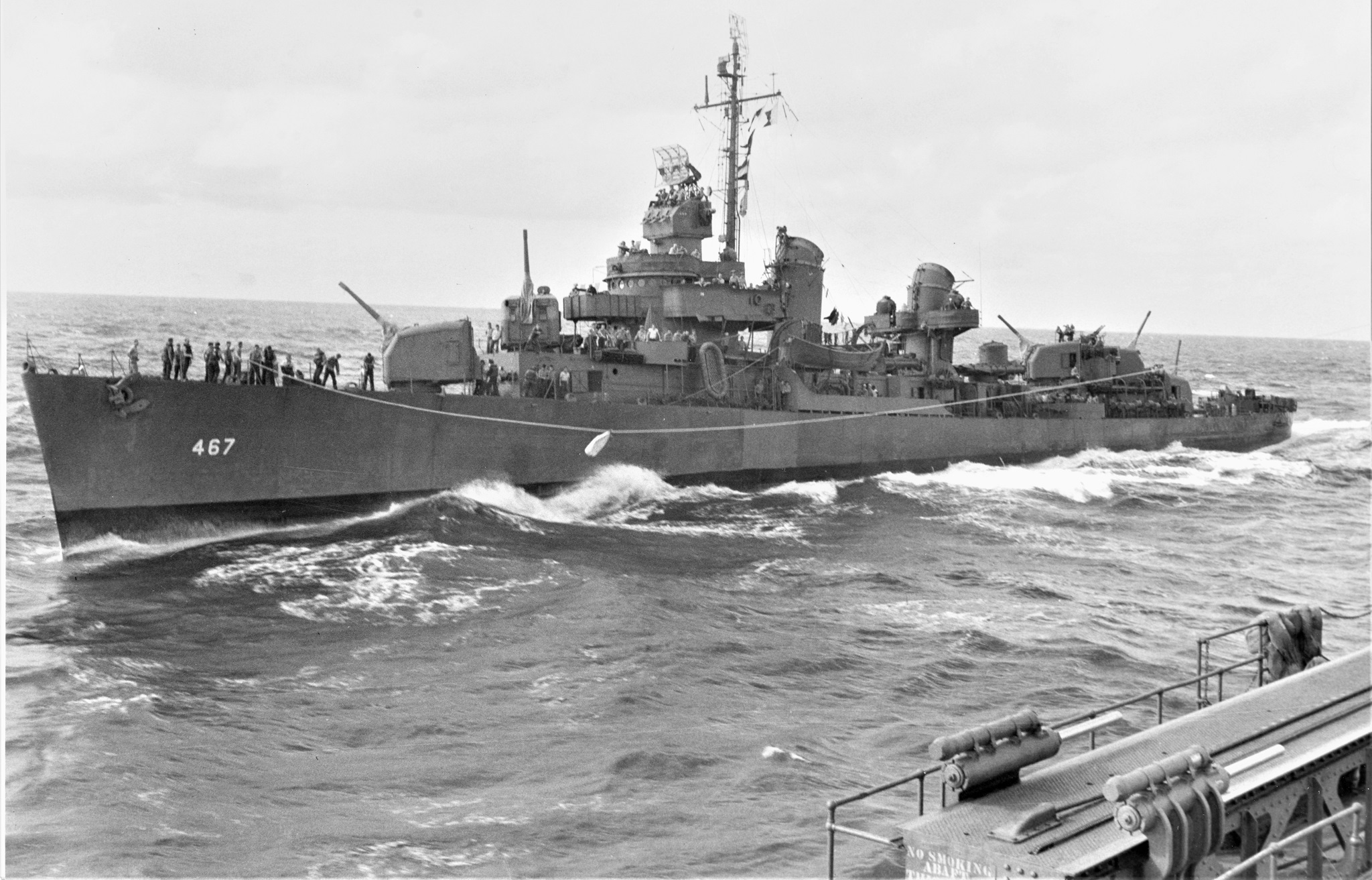
Official U.S. Navy Photograph, now in the collections of the National Archives. Catalog #: 80-G-52931
Above we see the Fletcher-class destroyer USS Strong (DD-467) as she highlines mail to the light cruiser USS Honolulu (CL-48) during operations in the Solomon Islands area, circa early July 1943. Our fighting tin can had the misfortune of being lost to what is credited as the longest-range torpedo hit in military history some 80 years ago today, 5 July 1943. A war baby, she had only been in service for 332 days.
Fletcher class background
The Fletchers were the WWII equivalent of the Burke class, constructed in a massive 175-strong class from 11 builders that proved the backbone of the fleet for generations. Coming after the interwar “treaty” destroyers such as the Benson- and Gleaves classes, they were good-sized (376 feet oal, 2,500 tons full load, 5×5″ guns, 10 torpedo tubes) and could have passed as unprotected cruisers in 1914. Powered by a quartet of oil-fired Babcock & Wilcox boilers and two Westinghouse or GE steam turbines, they had 60,000 shp on tap– half of what today’s Burkes have on a hull 25 percent as heavy– enabling them to reach 38 knots, a speed that is still fast for destroyers today.

USS John Rodgers (DD 574) at Charleston, 28 April 1943. A great example of the Fletcher class in their wartime configuration. Note the five 5″/38 mounts and twin sets of 5-pack torpedo tubes.
LCDR Fred Edwards, Destroyer Type Desk, Bureau of Ships, famously said of the class, “I always felt it was the Fletcher class that won the war . . .they were the heart and soul of the small-ship Navy.”
Meet USS Strong
Our vessel was the first named in honor of naval hero James Hooker Strong. A New Yorker who was appointed midshipman in 1829 at age 14, he learned his trade fighting buccaneers while with the Brazil Squadron and spent long years on the Mediterranean and East India Squadrons. Commander of the steamer Mohawk when the Civil War began, by 1863 he was skipper of the steam sloop USS Monongahela as part of the Western Gulf Blockading Squadron. Under Farragut, he sailed Monongahela into the heart of the Confederate stronghold of Mobile Bay and his ship was the first to engage the fearsome rebel ironclad CSS Tennessee.

RADM James Hooker Strong, a hero of the Battle of Mobile Bay, retired from the Navy in 1876 completing a 48-year career. He passed away in 1882. The photo above shows him with a special sword awarded by Congress for the Battle of Mobile Bay.
The first USS Strong (DD-467) was laid down on 30 April 1941 at Bath Iron Works in Maine. Launched on 17 May 1942, sponsored by Mrs. Susan H. Olsen, the great-grandniece of the late RADM James Hooker Strong, and commissioned at the Boston Navy Yard on 7 August 1942, her construction took just under 16 months.
Her first and only skipper was CDR Joseph Harold Wellings (USNA ’25)

USS Strong (DD-467). Heavily retouched copy of a photograph taken circa the later part of 1942. The retouching, which includes the land in the distance and the ship from the forward smokestack to the top of the pilothouse, was mainly done for censorship purposes, to eliminate radar antennas from the ship’s gun director and foremast. NH 97883
After a quick shakedown in the Casco Bay area and along the East Coast– which included active screening escort missions for the battleship USS Massachusetts— by October Strong was tagging along on convoys in the Caribbean and, by November, she was part of Convoy UGS-2 steering a course for North Africa to take part in the Torch landings.
Returning to New York on westbound Convoy GUF-2, she would sail two days after Christmas 1942 as part of Task Force 39, bound for Nouméa in Free French New Caledonia, the staging area for the push into Guadalcanal and the Solomons.

Strong at the New York Navy Yard three days before Christmas of 1942, Mt. 51, and Mt. 52 of her main battery are prominent in the foreground. Parenthetical numbers refer to recent modifications: (1) the raised platform and foundation for a 20-millimeter Oerlikon on the centerline aft of Mt. 52; (2) the large-type BL radar antennae; and (3) the relocated groups of vertical fighting lights. (U.S. Navy Bureau of Ships Photograph BS-40290, National Archives, and Records Administration, Still Pictures Division, College Park, Md.)

USS Conyngham (DD-371) At Espiritu Santo, New Hebrides, 15 February 1943. The destroyer in the right background appears to be USS Strong (DD-467). 80-G-38661
By March 1943, Strong, along with sisters USS Nicholas, Radford, and Taylor, as part of TG 18.6, was delivering 5-inch shells on the roofs of Japanese shore installations in late-night raids of Kolombangara Island.
Strong delivered 368 shells in that raid, all fired in just under 10 minutes.

Via her report “USS STRONG – Act Rep, Bombardment of Vila-Stanmore, 3/15-16/43” in the National Archives.
On the night of 7 April, while screening the cruiser Task Force 18 off San Cristobal Island, Strong came across one of the Emperor’s submarines, RO-34.
Via DANFS:
Strong’s searchlight revealed the presence of what proved to be RO-34 (Lt. Cmdr. Tomita Rikichi). Strong opened fire with her main battery and machine guns — expending ten 5-inch/38 rounds, 98 40-millimeter rounds, and 288 20-millimeter rounds. The destroyer reported that she struck the submarine three times with her 5-inch fire. During the barrage, RO-34 dove into the sea, down by the stern.
Strong circled RO-34’s location and dropped ten Mk. 6 depth charges and six Mk. 7 depth charges, to ensure RO-34’s journey to the bottom. Before she returned to the task force, Strong observed debris from RO-34 on the surface at 10°05’S, 162°08’E, and she was later credited with the sinking. After the war Japanese records indicated that RO-34 was given orders on 16 April to return to Rabaul, New Britain, which went unanswered, leading to the presumption that she was lost with all 66 souls on board.
May found Strong, as part of her task force, returning to her late-night NGFS raids of Japanese positions at Kolombangara, Enogai Inlet, and Rice Anchorage. She expended 815 rounds of 5-inch shells and, while retiring the next morning, popped off another five shells at interloping Japanese aircraft.
Speaking of aircraft, by 16 June, Strong, steaming with Nicholas (DD-449) and the oiler Monongahela (ironically), encountered a wave of 15 Val bombers joined by another half dozen Zekes. In the fight, all three American ships made it safely out of it while Strong, reportedly firing 194 5-inch, 750 40mm Bofors shells, and 980 20mm shells in just seven mad minutes, splashed three aircraft.
With an active career that saw her sink a submarine, shoot down a trio of incoming bombers, and hit enemy positions with almost 1,200 shells inside a span of just four months– all without any losses or damage of her own– Strong was in for a harsh meeting with fate.
Battle of Kula Gulf
On the night of 4/5 July, Strong, in company with three cruisers and four destroyers, was headed back to Kolombangara for another nighttime gun raid. As the second ship in the column behind USS Nicholas, Strong steamed into the Kul Gulf just after midnight on the 5th and plastered Japanese positions on Kolombangara Island, then around the Bairoko Inlet on New Georgia Island.
At 0043, she was struck by a torpedo that detonated on the port side of the forward fireroom at about frame 90.
The damage was catastrophic.
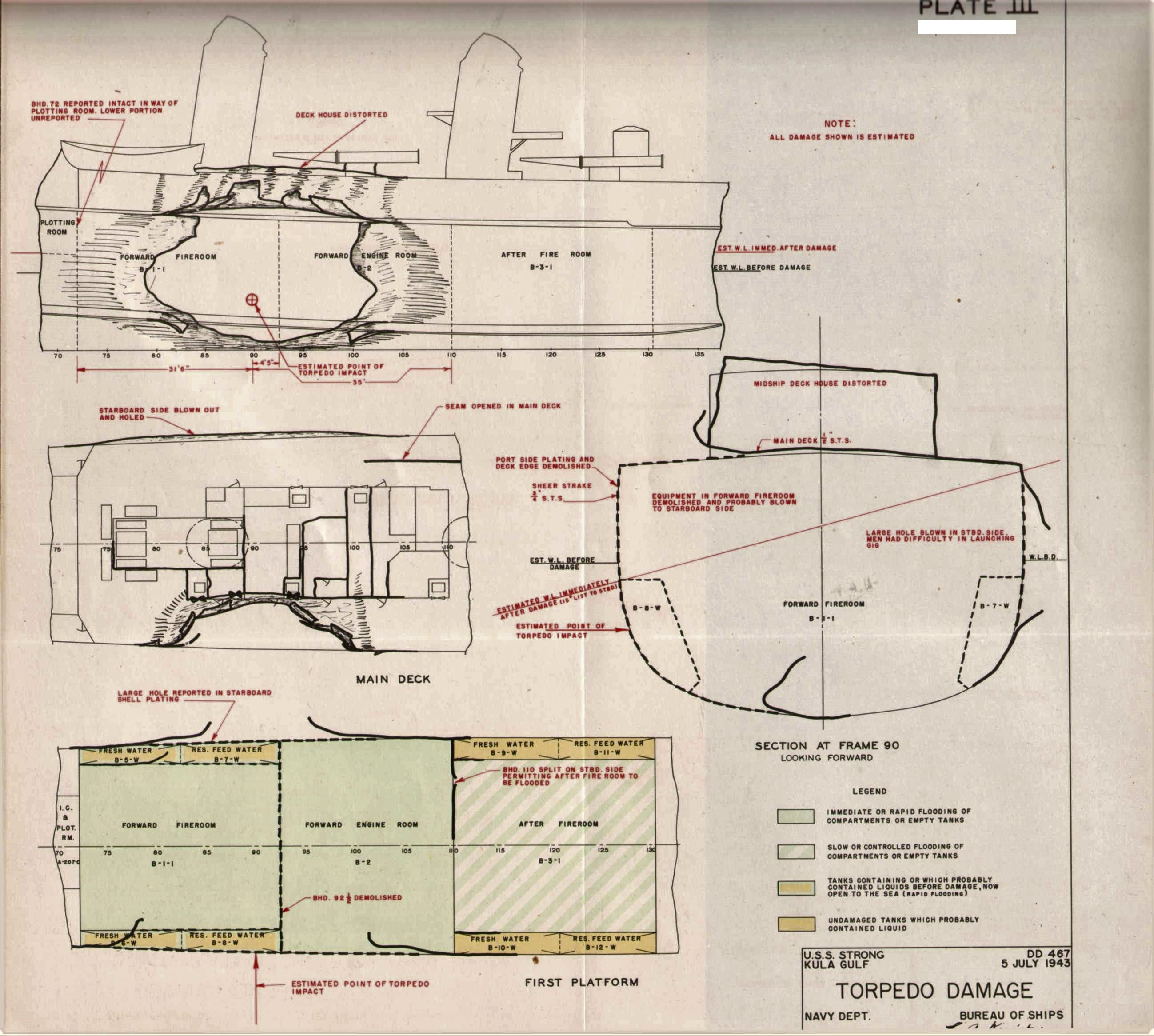
Via Destroyer Report: Torpedo and Mine Damage and Loss in Action: 17 October 1941 to 7 December 1944
While the cruisers moved off, with Nicholas as a screen, the destroyers USS Chevalier and O’Bannon moved in to assist Strong with rescue operations. All during the rescue, Japanese 140mm guns at Enogai Inlet kept firing star shells and AP rounds, some of which landed awfully close including both “shorts and overs.” Chevalier came alongside and managed to take off about three-quarters of the ship’s company before Strong’s depth charges exploded, wrecking Chevalier’s radars and sound gear.
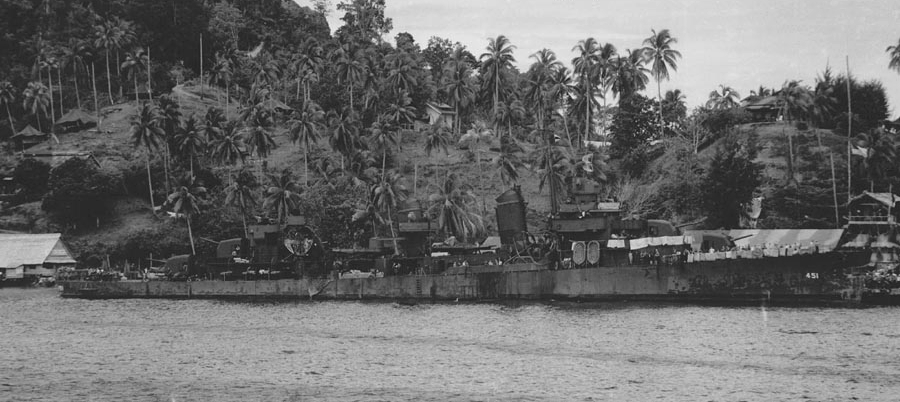
USS Chevalier (DD-451) Moored to the Government Wharf, Tulagi, Solomon Islands, 6 July 1943. Her bow was damaged while rescuing the crew of the sinking USS Strong (DD-467) during the 5 July 1943 Battle of Kula Gulf, and her 5/58 gun mount # 3 shows the effects of a hang-fire, explosion, and fire immediately after that rescue was completed. Courtesy of Rick E. Davis, 2012. This is a cleaned version of National Archives’ Photo # 80-G-259220.
From Strong’s loss report.
Through the courageous actions of the men of the USS Chevalier, most of Strong’s crew was safely taken aboard before the destroyer sank. Some 46 of her 325-man complement were listed as missing including several last seen “floating on a raft in the Kula Gulf.”
One of those considered MIA was LT Hugh Barr Miller Jr., USNR.
A standout of the Alabama football team, Miller was with the Crimson Tide when they won the national championship at the Rose Bowl in 1931 with a 24-0 shutout of Washington State. Old “Rose Bowl” Miller went on to become a southern lawyer who volunteered for the Navy in 1941 and, eschewing JAG work for surface warfare, was assigned to Strong as the destroyer’s 20mm and stores officer.

Making it to nearby Japanese-held Arundel Island, Miller survived there for 39 days, alternatively fighting, and coming on top in lop-sided battles against malnutrition, dehydration, and Japanese troops before he was recovered. 190225-N-ZV259-0184
Strong received three battle stars for her short but spectacular service in World War II,
Epilogue
There is a Project USS Strong DD-467 webpage and, as noted above, most of her reports are in the National Archives.
Post-war, it was established that Strong was likely holed by a Type 93 Long Lance torpedo from the Japanese Akizuki-class destroyer Niizuki, fired from no less than 11 nautical miles. If true, it is the longest confirmed wartime torpedo hit on record. Fittingly, Niizuki was sunk the next night in a clash with American surface ships.
Niizuki’s wreck was discovered by RV Petrel in January 2019. She sits upright in 2,444 feet of water and is heavily damaged. A month later, Petrel came across the shattered wreck of Strong in 980 feet of water.
CDR Joseph H. Wellings, Strong’s only commander, would earn the Bronze Star Medal, with Combat Distinguishing Device “V” and the Silver Star Medal for the destruction of the submarine RO-34 and the destroyer’s other actions. Following the sinking of the Strong, he was hospitalized until January 1944, then went on to command DESRON TWO for which he earned a Gold Star in lieu of the Second Bronze Star Medal, with Combat “V” for actions in the Philippines in early 1945. Post-war, he would command the cruiser USS Columbus (CA 74) and hold a series of senior appointments, retiring as a rear admiral in 1963. Admiral Wellings died on March 31, 1988. His papers take up 32 boxes in the U.S. Naval War College Archives.
As for “Rose Bowl” Miller, the hard-to-kill lieutenant was awarded the Navy Cross, two Silver Stars, six Bronze Stars, two Purple Hearts, and 27 other individual and unit decorations.

Miller was awarded the Navy Cross, personally bestowed on him by Eleanor Roosevelt, seen here in a Red Cross uniform, who was on a Pacific swing with the American Red Cross. Note Halsey looking on. 190225-N-ZV259-0185
Miller’s story was dramatized by the Navy in his lifetime, a real “One-Man Army”:
And he appeared on an episode of This is Your Life, hosted by Ronald Reagan.
Miller retired as a Navy Captain before passing away in 1978.
As for Strong’s Fletcher-class sisters, 24 were sunk or evaluated as constructive total losses during WWII including Strong’s companion Chevalier, which was scuttled after being torpedoed by a Japanese destroyer during the Battle of Vella Lavella, 6 October 1943. These ships were sent into harm’s way.
The rest of her surviving sisters were widely discarded in the Cold War era by the Navy, who had long prior replaced them with more modern destroyers and Knox-class escorts. Those that had not been sent overseas as military aid were promptly sent to the breakers or disposed of in weapon tests. The class that had faced off with the last blossom of Japan’s wartime aviators helped prove the use of just about every anti-ship/tactical strike weapon used by NATO in the Cold War including Harpoon, Exocet, Sea Skua, Bullpup, Walleye, submarine-launched Tomahawk, and even at least one Sidewinder used in surface attack mode. In 1997, SEALS sank the ex-USS Stoddard (DD-566) via assorted combat-diver delivered ordnance. The final Fletcher in use around the globe, Mexico’s Cuitlahuac, ex-USS John Rodgers (DD 574), was laid up in 2001 and dismantled in 2011.
Today, four hard-charging Fletchers are on public display, three of which in the U.S– USS The Sullivans (DD-537) at Buffalo, USS Kidd (DD-661) at Baton Rouge, and USS Cassin Young (DD-793) at the Boston Navy Yard. Please try to visit them if possible. Kidd, the best preserved of the trio, was used extensively for the filming of the Tom Hanks film, Greyhound.
The name USS Strong was recycled during the war for a new Allen M. Sumner-class destroyer (DD-758) laid down on 25 July 1943 by Bethlehem Steel Co., San Francisco. Commissioned on 8 March 1945, she made it to the Japanese Home Islands just in time for VJ-Day. She would then be highly active in the Korean War, conducting gun strikes up and down the peninsula, and then go on to conduct gunline conducting harassment and interdiction missions against North Vietnamese water-borne logistic craft in the 1960s.

USS Strong (DD-758) underway off the coast of Oahu, Hawaii on 21 May 1968. Photographer: PHCM Louis P. Bodine. Official U.S. Navy Photograph NH 107152
This second Strong received one battle star for Korean service and three battle stars for service in Vietnam before she was decommissioned and struck from the Navy list on Halloween 1973, transferred to Brazil for further service before being lost at sea while headed to the breakers in 1997.
With that, both USS Strongs rest on the sea floor.
Ships are more than steel
and wood
And heart of burning coal,
For those who sail upon
them know
That some ships have a
soul.
If you liked this column, please consider joining the International Naval Research Organization (INRO), Publishers of Warship International
They are possibly one of the best sources of naval study, images, and fellowship you can find. http://www.warship.org/membership.htm
The International Naval Research Organization is a non-profit corporation dedicated to the encouragement of the study of naval vessels and their histories, principally in the era of iron and steel warships (about 1860 to date). Its purpose is to provide information and a means of contact for those interested in warships.
With more than 50 years of scholarship, Warship International, the written tome of the INRO has published hundreds of articles, most of which are unique in their sweep and subject.
PRINT still has its place. If you LOVE warships, you should belong.
I’m a member, so should you be!

